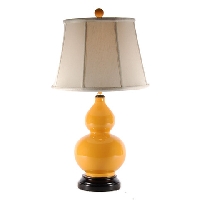
Don’t underestimate the power of knowing how to light living room
Your living room space is great but the illumination situation stinks. Part of creating the perfect room for relaxing and entertaining is knowing how to light a living room. Take into consideration the various activities going on in the room ? TV viewing, reading, computer use, etc. ? and go from there. Do not underestimate the importance of good illumination in your living room.
Handsome fixtures, table lamps, floor lamps and sconces change the wow factor of the room in a heartbeat. Not only do you need to see but incorporating lamps and other forms of illumination into your room gives the room lots of oompht.
If there are specific areas in the room you want to emphasize use up-lighting, focusing illumination on those spaces. Recessed lighting is another option, offering seamlessly blended general illumination.
Ambient Lighting
Cove lighting is an alternative. This style distributes light upward, allowing you to bounce light off the ceiling creating ambient illumination. Ambient means of or relating to the immediate surroundings ?the living room and the way it is used ?and refers to illumination coming from various directions. Cove lighting provides an intense effect when the lights are placed a minimum of 18 inches from the ceiling and about 6.5 feet from the floor.
~
Cove creates brightness in a room, eliminating dimness and the downward route of recessed lights. This style is an architectural luminary, directing illumination up to the ceiling. It is indirect because it originates from horizontal recesses from ledges or in the ceiling in the upper wall.
Cove illumination works especially well in rooms with high or vaulted ceilings, dispersing light over the ceiling evenly and warmly, creating ambience (mood.) Although this style is sometimes used for artistic reasons it also serves well as primary lighting.
Cove provides ambient and primary illumination as do recessed down lights, valance lighting, soffit lighting, wall washer, pendants, track, chandeliers, surface-mounted, portable fixtures, under cabinet and sconces. Soffit issues downward illumination, cove provides upward illumination and valances dispense illumination up and down.
Other Techniques
If building a new room, incorporate cove or valance illumination into the design. Creating mood or ambient illumination is achieved when using track lighting aimed toward the walls or recessed illumination, aimed at the walls rather than downward is used. Table or floor torchieres aim illumination upward.
Accent Lighting
To emphasize a certain area of a room, such as the fireplace or paintings, use accent illumination, achieved by using up- or track lighting.
Task Lighting
Task lighting is needed in those spaces where people read or knit or play board games. Table lamps with incandescent or LED light bulbs serve this purpose. Ideal task illumination is no less than 400 lumens. Ambient illumination for a living room needs to be 1,500 to 3,000 lumens.
Table and Floor Lamps
Table lamps not only serve a much-needed function but add beauty, design and interest to a room. Lamps come in various shapes, sizes, colors and heights.
A floor lamp is another good choice. Buy one featuring a flexible head so you can aim the illumination where you need it.
Ceiling Lamp
Select a ceiling lamp which hangs from above. It can be a pendant, flush ceiling lamp or a spotlight.
Bulbs and Shades
Pink bulbs make a room look very romantic. Pretty shades can spiff up an ordinary lamp in no time flat. Your old lamp may be just fine if you dress it up with a new shade.
Consider using LED bulbs instead of traditional incandescent bulbs. LED bulbs last a long time and use far less energy than incandescent.
